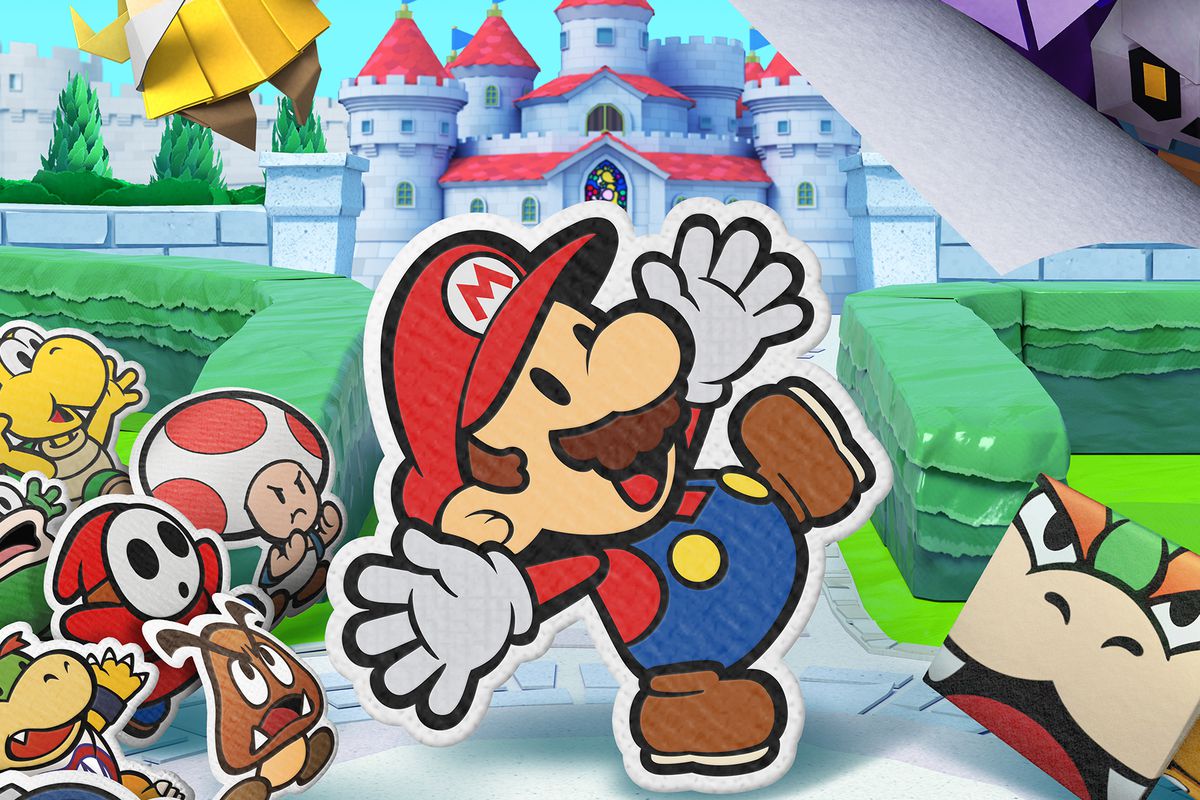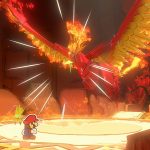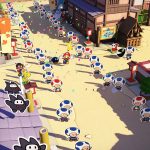The Paper Mario series has been in a bit of a rut. With a widely-panned Wii U title, and an uninspiring 3DS release, fans of the 2D RPG series are hoping for a return to form with this new entry on Nintendo Switch.
On paper, everything seems like it’s going to be a smash hit, with series staples reappearing alongside revamped combat. But will this game soar like a paper aeroplane, or is it another disappointing release to be crumpled up and thrown in the recycling?

The story starts off simply enough – you guessed it, Princess Peach (who looks a bit..folded), along with her entire castle is kidnapped by an evil origami magician (not Bowser!) and it is up to you, Mario, to find her. It is a trope story set up but at this point I would be more surprised if this isn’t how a Mario game begins.
Mario soon saves Olivia, a fairy-like origami helper and sister of the evil magician, who acts as a guide and a voice for our speechless red plumber. Together, you take off to rescue the Princess by following the streamers tying up her castle and combating the magician’s origami-folded creations. These take you to typically varied environments, which help to show off the creative chops of the game’s designers.
Paper Mario’s infamous self-aware and self-deprecating humour is retained here, with Nintendo Treehouse doing another exceptional job at translating the game. Even small, niche NPCs are full of character and witty observations.
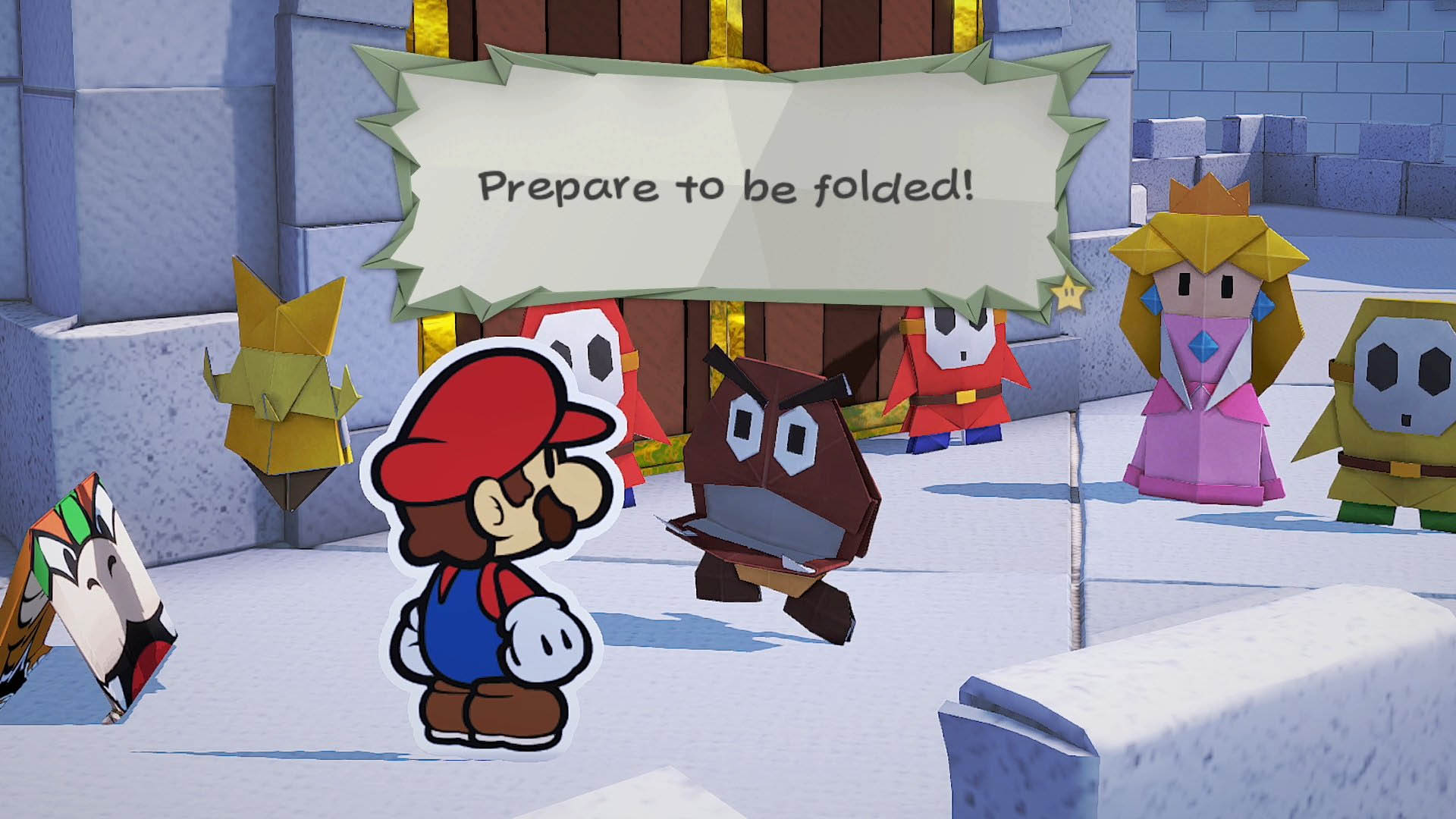
Like the name of the game suggests, the entire world is full of cute papercraft buildings, and plant life. It truly looks like a diorama, and Origami King fits in well with other Nintendo real-life analog titles such as Kirby’s (Extra) Epic Yarn, Yoshi’s Wooly World and Yoshi’s Crafted World. It is clear who is a goodie and a baddie, goodies retaining the usual flat, 2D appearance from previous Paper Mario titles, but the baddies looking like exquisitely crafted origami-folded takes on common Mario enemies. It looks fantastic on a big TV and even better on the smaller, higher-density Switch screen.
As you walk around these worlds you fill in holes in the scenery with your limited pool of confetti, which you get from bashing trees or defeating enemies. This lets you access hidden secrets, new areas and refill your stock of coins. Another important task is to discover the hundreds of toads hidden in crevices, behind signs and scrunched up among the environment. Not only will you be rewarded with hearing the odd reasons why they ended up in their precarious situation, but these toads will literally cheer you on from the sidelines during battles. It made for a nice touch, seeing all the toads I saved sitting there and helping me out during battles.

Speaking of battles, one of the biggest departures for Origami King is the unique combat system. Instead of a turn-based battle system of yore, instead Origami King asks you to complete puzzles within a difficult time limit. Mario sits within what looks like a pizza or pie, cut up into multiple slices both vertically and horizontally. Think of a dartboard perhaps. Enemies are spread out on these sections, and Mario must line them up, moving them up and down and left and right, to activate an attack bonus and get at them by stomping them in a row or whacking a group with a hammer.
If an enemy attacks, you can guard to reduce damage taken, but you don’t have a lot of health for Mario to take multiple rounds of attacks, and so it is all about lining up areas with the limited time given to you. You can also buy better weapons with the coins you earn in battle, such as steel boots to jump on spiky-shelled Koopa Troopers, but unfortunately these degrade and break after a few uses, which seems punishing. I would have preferred these be more permanent upgrades without the constant worry of whether I need to buy more or if I need to grind some coins.
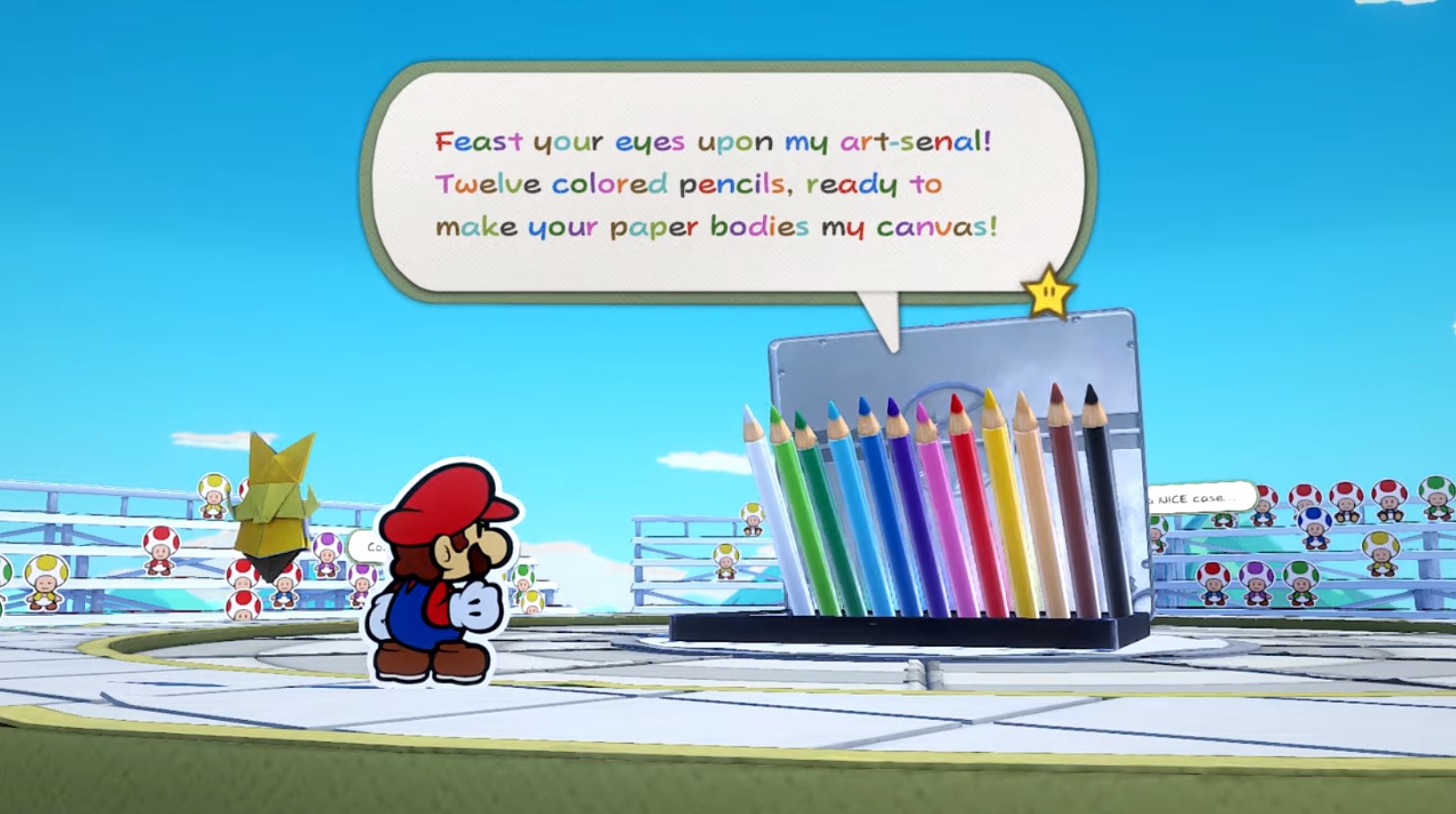
It is a somewhat stressful system that is quite punishing if you get it wrong. But when you solve the puzzle quickly and take out all your enemies in one turn it is immensely satisfying. The most surprising part of the combat system, however, is that it is almost totally optional, outside boss fights. Battles offer no experience points, new skills or other long-lasting benefits. Yes, you can earn large amounts of coins, but these are only useful…in battle. This meant I was careful to avoid running into enemies in the world, lest I be held up unnecessarily.
Speaking of boss battles, these are slightly different, flipping the normal combat system on its head. Instead of Mario being in the centre of the pie, Mario is on the pie itself, and must manipulate the pie to line up a path for him to attack the boss. This works much better than standard combat and was truly enjoyable, much more so to me than the standard battles, which swung wildly between too easy and overly-difficult.

While Origami King doesn’t capture quite the same magic as Paper Mario: The Thousand Year Door, it is a solid entry for the series, and a welcome first-party Nintendo game in a period when there isn’t much else on the horizon for the Japanese gaming giant.
Its combat is a unique take not only for the series but RPGs as a whole, and the bright world, humour and overall presentation makes this a marked step up from recent Paper Mario titles, and demonstrates the action-RPG game should not be cut out of our lives just yet.

Released: July 2020
Rating: G
Platforms: Nintendo Switch
Genre: Adventure
Developer: Intelligent Systems
Publisher: Nintendo

